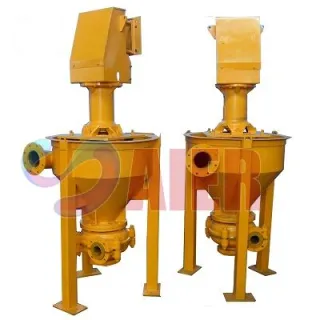Nov . 10, 2024 19:34 Back to list
China Manufactured Slurry Pump Casings for Optimal Performance and Durability
Understanding the China Slurry Pump Casing Design, Materials, and Applications
The slurry pump casing serves as a critical component in the hydraulic mechanism of slurry pumps, which are extensively used in various industries, including mining, construction, and chemical processing. In China, the advancements in slurry pump casing design and manufacturing have significantly enhanced the efficiency and durability of these pumps, catering to the growing demands of different sectors.
Design of Slurry Pump Casings
The design of slurry pump casings is paramount. These casings are engineered to withstand the harsh conditions associated with transporting slurries, which are mixtures of solids and liquids. The casing must not only contain the discharge of the slurry but also maintain structural integrity under high pressure and abrasive conditions.
Modern designs often feature a volute or centrifugal configuration, which helps in efficiently converting kinetic energy into hydraulic energy. The shapes and dimensions of the casings are tailored based on the type of slurry being handled, the flow dynamics, and the operational requirements of the system. Advances in computer-aided design (CAD) allow for more precise modeling, optimizing the flow characteristics to increase efficiency and minimize energy consumption.
Material Selection
Material selection for slurry pump casings is another crucial factor that influences performance and longevity. In most applications, materials must demonstrate excellent wear resistance, corrosion resistance, and the ability to withstand high temperatures. In China, common materials for slurry pump casings include
1. High Chrome Alloys These alloys are known for their outstanding wear resistance and ability to handle abrasive materials. High chrome casings are ideal for mining applications where the slurry contains a high concentration of large, sharp particles.
2. Rubber Linings In applications where chemical corrosion is a concern, rubber-lined casings are often employed. These casings provide excellent corrosion resistance while also absorbing some of the impacts from the abrasive materials in the slurry.
3. Stainless Steel In industries such as food processing or pharmaceuticals, where hygiene is critical, stainless steel casings are utilized for their resistance to corrosion and ease of cleaning.
china slurry pump casing

The meticulous selection of materials ensures that the slurry pump casing performs optimally under varying conditions while maximizing its service life.
Applications of Slurry Pump Casing
The applications of slurry pump casings in China span multiple industries
. Some of the most notable sectors include- Mining and Mineral Processing Slurry pumps are widely used to transport tailings and other mineral slurries. The durability of the casing is vital, as it encounters highly abrasive materials.
- Construction In construction projects, slurry pumps are employed for dewatering and transporting cement or concrete slurries, necessitating robust casings that can withstand high pressure.
- Chemical Processing The chemical industry often requires the transport of slurries that can be corrosive. Here, the importance of using rubber-lined or stainless steel casings becomes evident, to prevent damage and ensure operational safety.
- Wastewater Treatment Slurry pumps are also integral to the management of waste treatment, where they help in handling sludge and other by-products efficiently.
Conclusion
The slurry pump casing is a vital element in the operational efficiency and service life of slurry pumps, particularly in China where the industry continues to evolve and expand. The careful design, material selection, and versatile applications of slurry pump casings demonstrate the ingenuity and engineering prowess present in this sector. With ongoing advancements, China remains a significant player in the global slurry pump market, contributing to innovations that enhance productivity and sustainability across various industries. As demands grow and new challenges arise, the evolution of slurry pump casing technology will undoubtedly play a crucial role in shaping the future of fluid transport solutions.
-
High Quality Slurry Pump Seals Reliable China Suppliers & Manufacturers
NewsJun.24,2025
-
High Quality Portable Submersible Slurry Pump Supplier & Manufacturer from China
NewsJun.10,2025
-
Slurry Pump Parts Manufacturer – High Quality Rubber Spare Parts from China
NewsJun.10,2025
-
High Quality 1/3 HP Submersible Sump Pump with Vertical - Reliable Supplier & Factory Price
NewsJun.10,2025
-
High-Efficiency Centrifugal Slurry Pumps India
NewsJun.10,2025
-
High Quality Warman Centrifugal Slurry Pump Suppliers & Factory
NewsJun.10,2025
